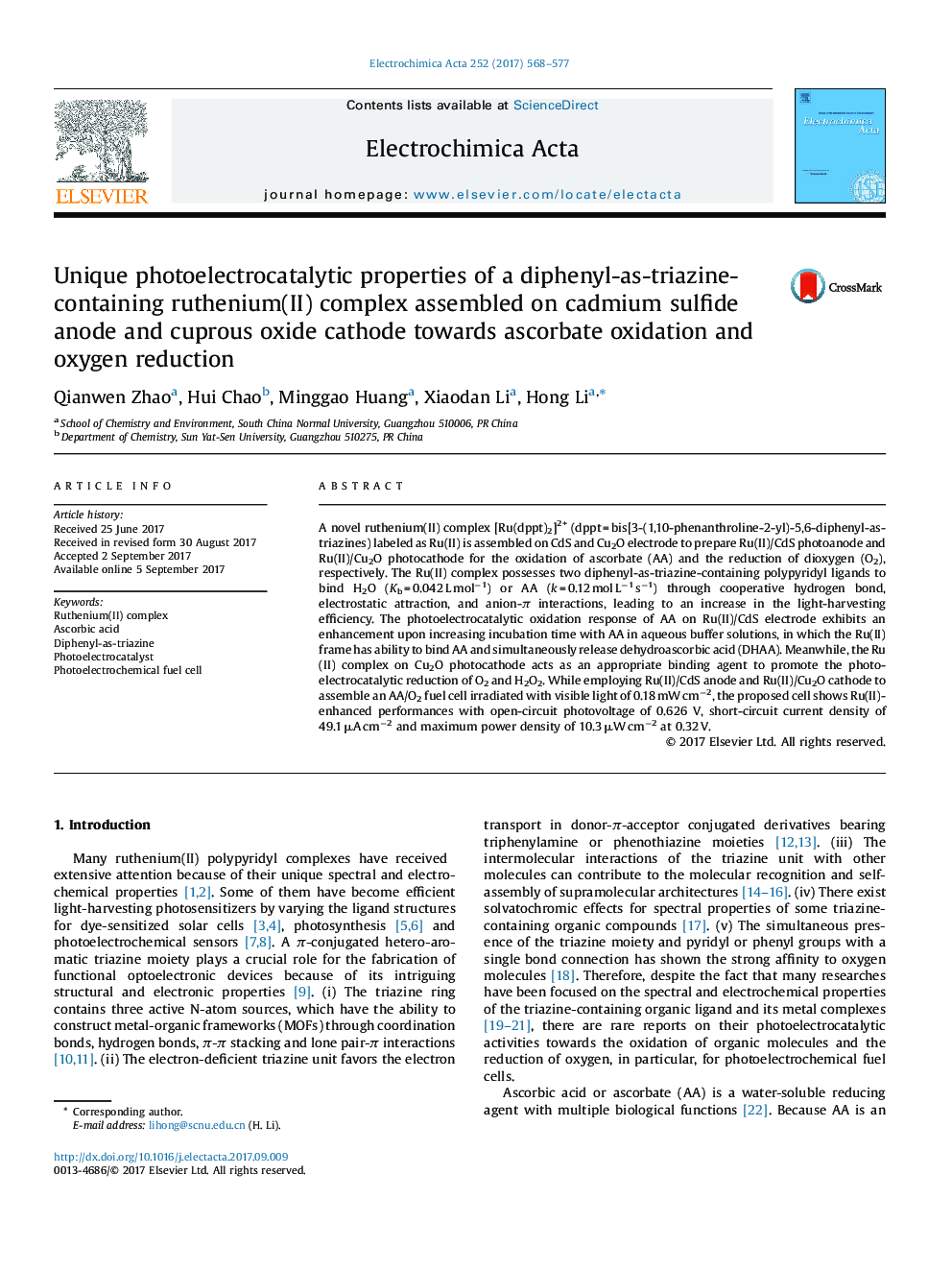| Article ID | Journal | Published Year | Pages | File Type |
|---|---|---|---|---|
| 6470381 | Electrochimica Acta | 2017 | 10 Pages |
â¢A diphenyl-as-triazine-containing Ru(II) complex is assembled on CdS and Cu2O.â¢Ru(II) shows tunable spectral properties by binding H2O with Kb = 0.042 L molâ1.â¢Ru(II) can bind AA with k = 0.12 mol Lâ1 sâ1 and simultaneously release DHAA.â¢Ru(II) shows photoelectrocatalytic activity towards AA oxidation and O2 reduction.
A novel ruthenium(II) complex [Ru(dppt)2]2+ (dppt = bis[3-(1,10-phenanthroline-2-yl)-5,6-diphenyl-as-triazines) labeled as Ru(II) is assembled on CdS and Cu2O electrode to prepare Ru(II)/CdS photoanode and Ru(II)/Cu2O photocathode for the oxidation of ascorbate (AA) and the reduction of dioxygen (O2), respectively. The Ru(II) complex possesses two diphenyl-as-triazine-containing polypyridyl ligands to bind H2O (Kb = 0.042 L molâ1) or AA (k = 0.12 mol Lâ1 sâ1) through cooperative hydrogen bond, electrostatic attraction, and anion-Ï interactions, leading to an increase in the light-harvesting efficiency. The photoelectrocatalytic oxidation response of AA on Ru(II)/CdS electrode exhibits an enhancement upon increasing incubation time with AA in aqueous buffer solutions, in which the Ru(II) frame has ability to bind AA and simultaneously release dehydroascorbic acid (DHAA). Meanwhile, the Ru(II) complex on Cu2O photocathode acts as an appropriate binding agent to promote the photoelectrocatalytic reduction of O2 and H2O2. While employing Ru(II)/CdS anode and Ru(II)/Cu2O cathode to assemble an AA/O2 fuel cell irradiated with visible light of 0.18 mW cmâ2, the proposed cell shows Ru(II)-enhanced performances with open-circuit photovoltage of 0.626 V, short-circuit current density of 49.1 μA cmâ2 and maximum power density of 10.3 μW cmâ2 at 0.32 V.
Graphical abstractDownload high-res image (168KB)Download full-size image
